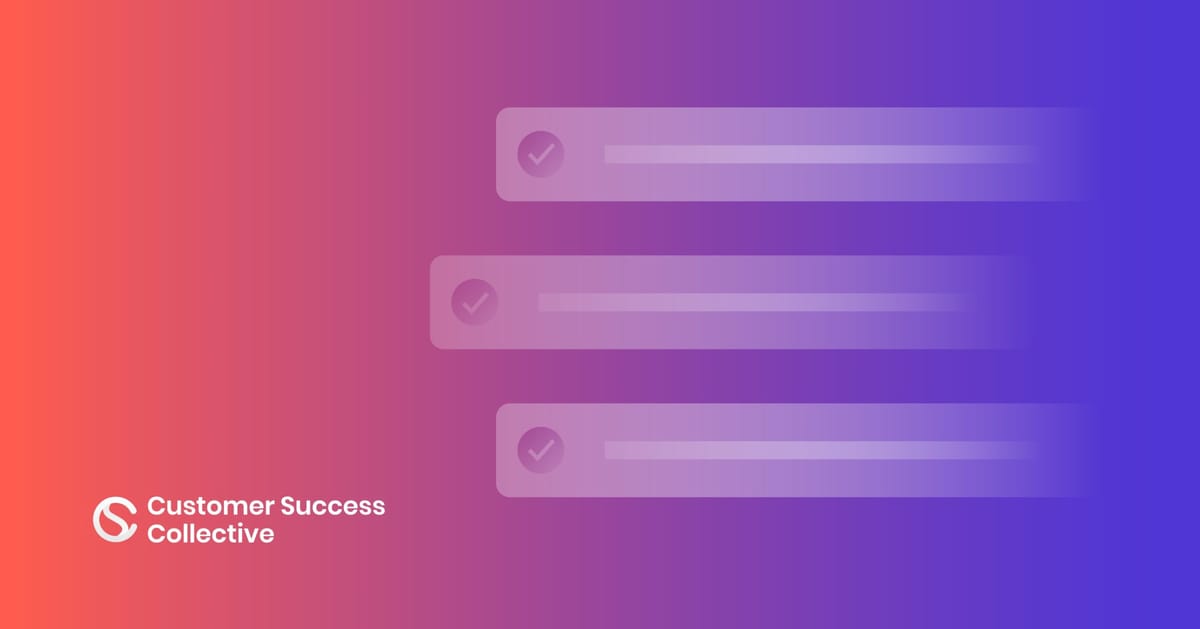Let's face it, we all know that a solid customer onboarding experience is the bedrock of customer success. It sets the stage for product adoption, boosts customer satisfaction, and ultimately drives those beautiful renewals and revenue growth we all crave.
But what happens when things don't go as planned?
When customers aren't fully utilizing your product, or their needs have shifted? That's when we find ourselves at a crossroads: re-onboard or re-engage?
Keep on reading if you want to learn:
- What re-onboarding is
- What re-engagement is
- How to determine which model is best for you
- Best practices for success
What is re-onboarding?
Think of re-onboarding as hitting the refresh button on your customer's journey. It's about reintroducing or even re-educating them about your product or service. Maybe they haven't explored all the features, perhaps there's been a major update, or maybe there's been a shakeup in their team.
Whatever the reason, re-onboarding helps fill those knowledge gaps, reignites their enthusiasm, and ensures they're getting the maximum value possible.
Hitting that “refresh” button
I've seen firsthand how re-onboarding can be a game-changer. One of my clients experienced a complete leadership overhaul. Suddenly, the goals we'd initially set together no longer aligned with the new team's vision. Even though they had technically been onboarded, adoption was low. The new team just wasn't seeing the value.
So, we decided to re-onboard them, tailoring the process to the new leadership's objectives. It was a significant investment – we reassigned a dedicated implementation specialist, planned targeted training workshops, and even pulled in product experts. Was it worth it?
Absolutely. We built a stronger, more strategic relationship, adoption rates soared, and engagement deepened. This not only saved the partnership but turned it into a thriving, long-term success.
What is re-engagement?
Re-engagement, on the other hand, is about reconnecting with customers who've become less active or are at risk of churning.
This might involve personalized emails, showcasing new features that align with their goals, or simply resolving outstanding issues. It's all about reminding them why they chose your product in the first place and reigniting that spark.
Reigniting the spark
I recall another client whose usage metrics were slowly declining. After some digging, we discovered that the internal champion moved to another position and had left the rest of the team not as confident in using or knowing about the product's full capabilities.
We sprang into action, getting to know the new team, understanding their pain points, and product knowledge gaps, and identifying where we could add value. It turned out a recently launched feature was the perfect solution to one of their biggest challenges.
We quickly set up tailored training sessions and provided best practices. By proactively reaching out and showing genuine interest in their success, we were able to turn things around – no full re-onboarding needed.
Making the call: Re-onboard or re-engage?
Deciding whether to re-onboard or re-engage a customer is a complex choice that depends on several key factors.
First and foremost, consider the customer's importance. Is this a high-priority account with significant strategic or financial impact? If so, the investment in re-onboarding might be more easily justified.
Next, evaluate your available resources. Do you have the bandwidth to take on a full re-onboarding process? If not, a more targeted re-engagement approach might be more feasible. It's also crucial to conduct a cost-benefit analysis. Will the potential return on investment (ROI) justify the time and resources spent on either strategy?
Additionally, understanding the root cause of the customer's disengagement is vital. Can the issues be resolved quickly through targeted re-engagement, or are they more fundamental, requiring a comprehensive re-onboarding? Consider any upcoming events or deadlines that may necessitate quick action.
Finally, always take into account the customer's feedback. What are they saying about their experience? Are there unresolved issues or areas of dissatisfaction that need to be addressed?
By carefully weighing these factors, you can make an informed decision that best supports your customer's needs and your company's goals.
Best practices for success
No matter the path you choose, re-onboarding or re-engagement, the following practices can help ensure success:
- Personalization is key. Tailor your approach to fit each customer's unique needs and goals.
- Leverage data-driven insights: Use data on product usage to pinpoint areas for improvement and guide your strategy.
- Maintain open communication through regular check-ins. This will allow you to gather feedback and make adjustments as needed.
- Ensure stakeholder engagement by involving decision-makers and key users in the process. This fosters alignment and strengthens buy-in for your efforts.
- Provide continuous learning resources and support to empower your customers for the long haul.
By following these best practices, you'll be well-equipped to navigate the complexities of re-onboarding and re-engagement and achieve successful outcomes.
%20(1)%20(1).jpg)
Wrapping up
Choosing between re-onboarding and re-engagement is a nuanced decision that requires careful consideration.
But by understanding your options, weighing the factors involved, and following best practices, you can make the right call for each unique situation. And remember, whether you're hitting refresh or reigniting the spark, the ultimate goal is always the same: fostering stronger customer relationships and driving long-term success.
Exceptional customer experiences start from day one 📚
Don't let new users slip through the cracks – transform them into loyal, engaged customers with a stellar onboarding process.
Our Customer Onboarding Certified program provides the strategies and insights you need to craft an onboarding experience that delights users and drives results.
Learn to segment and personalize, continually optimize based on feedback, identify key metrics, and map the customer journey.
We'll give you the tools to understand your customers, engage them fully, and set their experience up for long-term success.
In today's tech market, the subscription model means first impressions matter more than ever. Keep customers coming back by getting onboarding right from the start.
Invest in your customers, invest in your business.
Enroll in Customer Onboarding Certified today and transform new users into passionate brand advocates.



 Follow us on LinkedIn
Follow us on LinkedIn







